Transform your backyard into an inviting hub for gatherings with a well-crafted outdoor bar setup. Whether you’re hosting a casual get-together or a festive celebration, creating a stylish and functional outdoor bar can elevate your space, turning it into the go-to destination for family and friends. In this guide, we’ll explore essential tips, cost-effective solutions, and design ideas to help you create a weatherproof and visually appealing outdoor bar that withstands the seasons. From choosing the right materials to enhancing your bar top, we’ll cover everything you need to know to perfect your outdoor bar setup. Let’s dive into the details and uncover the secrets to creating a space that’s both practical and picturesque.
Key Takeaways
- Choose the Right Material: Select from durable options like concrete, pressure-treated wood, composite decking, stainless steel, aluminum, stone slabs, tile, or brick pavers for a weatherproof and stylish setup.
- Winterize Your Outdoor Bar: Shield your bar with high-quality covers, secure its base, store indoors, use protective padding, lubricate moving parts, and check for security to survive winter conditions.
- Optimal Bar Top Width: Aim for a 12-inch standard width, extend up to 18 inches for shade or seating, and ensure materials like treated wood or composite decking for durability.
- Material Selection Tips: Prioritize low-maintenance and weather-resistant materials for longevity and aesthetic appeal.
- Design Features to Enhance Functionality: Add overhangs for shade, incorporate built-in shelving, and ensure rounded edges for safety and visual appeal.
- Secure Installation for Stability: Anchor the bar with proper footings and ensure it’s stable against walls or under roofs.
- Ergonomic Considerations: Opt for a bar height between 42 to 48 inches for comfortable access and avoid overcrowding.
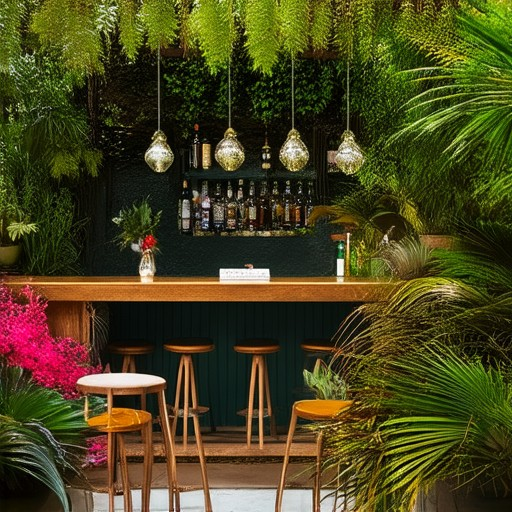
How Much Does a Bar Setup Cost?
The cost of setting up a bar depends on several factors, including location, size, and amenities. Below is a breakdown of the key components:
1. Location and Property Costs
- Rent vs. Buy: Renting a space for a bar typically costs between $50,000 to $200,000 annually, depending on the area. Purchasing a property for a bar can range from $150,000 to $800,000, depending on location and condition.
2. Permits and Licenses
- Licensing Fees: Obtaining the necessary alcohol license can cost between $300 to $2,500, varying by state and local regulations. Additional fees may apply for food service permits.
3. Renovation Costs
- Space Preparation: Renovating an existing space for a bar can range from $10,000 to $100,000, depending on the extent of work needed. Building from scratch can increase costs significantly.
4. Equipment and Inventory
- Bar Equipment: Setting up a fully functional bar requires equipment such as glasses, bottles, ice machines, and cash registers, costing approximately $15,000 to $30,000.
- Inventory: Staggering costs for initial stock can range from $25,000 to $75,000, depending on the types of beverages served.
5. Staffing
- Hiring Bartenders and Waitstaff: Expect to spend $8 to $12 per hour for staff, with training costs adding another $500 to $1,000.
6. Legal and Administrative Costs
- Legal Fees: Hiring a lawyer for lease agreements and liquor licensing can cost around $1,000 to $3,000.
- Health Department Inspections: Fees for compliance checks and certifications typically range from $100 to $500.
7. Signage and Branding
- Signage Costs: Professional signage and branding can cost between $500 to $3,000, depending on design and installation.
8. Soft Costs
- Utilities and Taxes: Additional expenses include utilities, taxes, and insurance, which can add $5,000 to $15,000 annually.
Key Tips for Managing Costs
- Location Strategy: Opt for a prime area with lower rent but higher foot traffic.
- Budget Management: Plan carefully and consider all hidden costs to stay within budget.
For more details on planning and executing your bar setup, visit our comprehensive guide at Home Ideas Finders .
Material Options for an Outdoor Bar
When building or upgrading an outdoor bar, selecting the right material is crucial for durability, aesthetics, and functionality. Here are some top choices:
- Wood : A classic choice, wood offers a warm, inviting look. Pressure-treated wood is recommended for outdoor use due to its resistance to moisture and pests.
- Concrete : Durable and customizable, concrete is a great option for a sturdy base. Ensure the foundation is strong enough to support the weight, especially when considering added features like seating or shelving.
- Stainless Steel : Known for its strength and rust-resistance, stainless steel is an excellent choice for a modern, low-maintenance outdoor bar. Consider adding a backsplash to protect the surface from spills and liquids.
- Stone Tile or Granite : Natural materials like stone tiles or granite slabs provide a sophisticated look and are non-porous, making them ideal for outdoor use. Regular sealing is required to maintain their finish and prevent water absorption.
- PVC or Composite Materials : These materials are lightweight, easy to install, and less prone to warping or cracking compared to wood. They are often available in a variety of colors to match your outdoor decor.
- Metal (Aluminum) : Lightweight and rust-resistant, metal, particularly aluminum, is a good choice. Powder-coating can enhance its durability and aesthetic appeal.
- Recycled Plastic : An eco-friendly option, recycled plastic is lightweight, low-maintenance, and won’t splinter. It’s a great choice for a durable and safe outdoor bar surface.
- Quartz Countertops : Offering a natural stone appearance with greater durability, quartz countertops are an excellent choice for outdoor bars. They require regular sealing to maintain their luster and resist stains.
Each material has its own advantages, so consider factors like budget, maintenance requirements, and desired style when making your decision. For further details on these options, visit our Outdoor Bar Materials Guide .
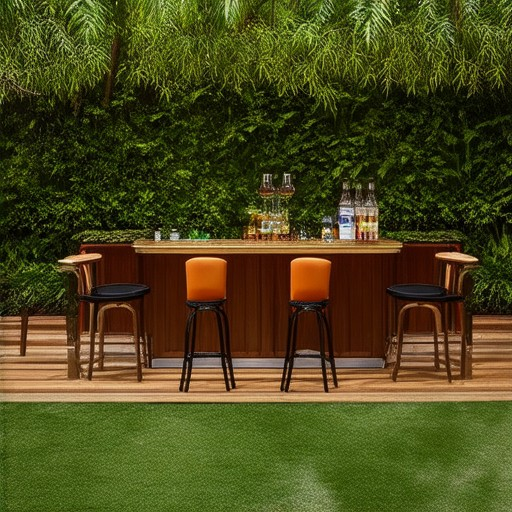
How to Waterproof an Outdoor Bar
To effectively waterproof an outdoor bar, follow these essential steps:
- Assess the Material : Determine the material used in constructing your outdoor bar. Common materials include concrete, wood, metal, and polished stone.
- Treat Concrete Surfaces : Apply a high-quality siloxane-based sealer or waterproofing agent designed for masonry. Ensure even coverage and allow it to dry completely before proceeding.
- Seal Wood : If the bar is constructed of pressure-treated wood, enhance its waterproofing by applying a second coat of a waterproof exterior stain. Opt for products with UV resistance to guard against fading.
- Protect Metal Surfaces : Clean metal surfaces thoroughly and apply a protective coating or rust inhibitor to prevent corrosion and maintain their finish.
- Preserve Polished Stone or Marble : Use a stone-specific sealant to protect polished stone or marble surfaces, preventing etching and staining while enhancing water resistance.
- Address Joints and Gaps : Inspect and seal all joints and gaps between materials using a waterproof silicone sealant to create a watertight barrier.
- Regular Maintenance : Clean the bar regularly with mild detergent to remove dirt and grime, which can trap water and lead to damage. Consider reapplying sealants every few years as needed.
- Consult Professionals : For complex structures or severe water damage, consult a professional who specializes in waterproofing solutions.
By following these steps, you can ensure your outdoor bar remains durable and aesthetically pleasing, withstand weather conditions, and provide years of enjoyment.
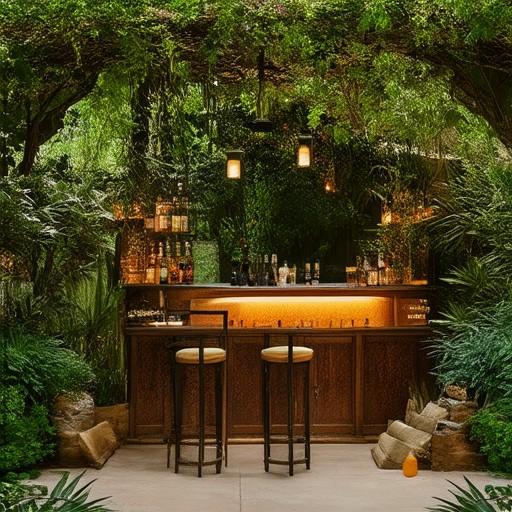
What to Use as an Outdoor Bar Top?
Choosing the right material for your outdoor bar top involves considering factors like durability, maintenance, and aesthetic appeal. Here are some popular options:
- Concrete : Durable, low-maintenance, and can be colored or stamped to match your decor.
- Pressure-Treated Wood : Weather-resistant and offers a natural, rustic look.
- Composite Decking : Made from recycled materials, it’s low-maintenance and eco-friendly.
- Stainless Steel : Rust-proof and long-lasting, ideal for a sleek, modern look.
- Aluminum : Lightweight and easy to install, with a variety of finishes available.
- Stone Slabs : Available in various colors and textures, stone adds a sophisticated touch.
- Tile : Durable and perfect for a modern, clean look, with options in ceramic or porcelain.
- Brick Pavers : Versatile and can be arranged in various patterns for a classic outdoor feel.
For installation and material selection, consider visiting your local hardware store or exploring options online at [Home Ideas Finders](https://www.homeideasfinders.com/).
How to Protect an Outdoor Bar in Winter
To safeguard your outdoor bar from winter damage, follow these organized steps:
- Cover the Bar : Use high-quality, water-resistant covers made from durable materials to shield the bar from moisture and temperature changes. Ensure the cover fits snugly to prevent shifting.
- Secure the Base : Inspect the legs for stability. Sand the feet to remove rough spots and place weights or brackets for added support, preventing tipping risks posed by heavy snow or ice.
- Store Indoors or Under Cover : If possible, bring the bar indoors to protect it from harsh winter conditions. If storage isn’t feasible, stack it off the ground and cover with a sturdy tarp.
- Use Protective Padding : Place thick cushions or blankets underneath the bar to insulate and prevent excessive cooling, adding an extra layer of protection.
- Check Moving Parts : Lubricate wheels and moving components with silicone-based products to prevent rust and ensure smooth operation. Drain any fluid reservoirs completely to avoid freezing.
- Inspect for Security : Check for loose screws or bolts in moving parts to prevent damage from vibrations or movement.
By following these steps, you can effectively protect your outdoor bar, ensuring it remains in great condition throughout the winter season.
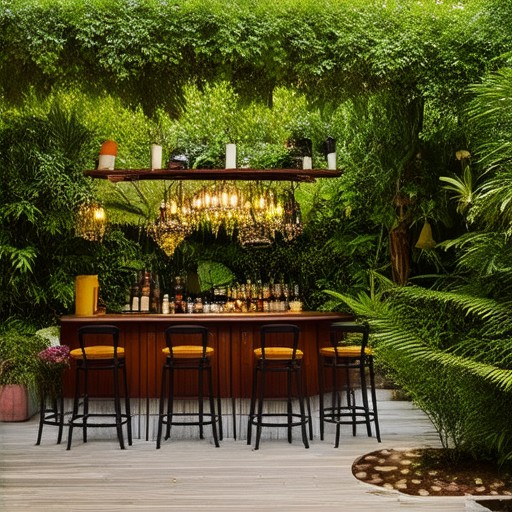
How Wide Should an Outdoor Bar Top Be?
The ideal width for an outdoor bar top depends on several factors, including functionality, comfort, and aesthetic preferences.
Standard Width Recommendations
A common recommendation is to set the bar top at 12 inches wide. This width provides sufficient space for drinks and snacks without feeling crowded. However, if you plan to add an overhang for shade or extra seating, you may want to extend the width by an additional 12 to 18 inches. It’s important not to exceed one-third of the total width for the overhang to maintain balance and stability.
Material Considerations
Choosing the right material is crucial for durability and longevity. Treated wood or composite decking are excellent choices for outdoor use due to their strength and resistance to weather conditions. Metal bar tops are low-maintenance and sturdy, though they can become hot in direct sunlight. Concrete and stone options are robust but may require professional installation to prevent cracking or movement.
Design Features
Consider adding an overhang for added functionality, such as shade or extra seating. Rounded edges can enhance safety and visual appeal. Incorporating built-in shelving or cabinets beneath the bar can provide valuable storage space. Proper lighting is also essential, especially if the bar is placed in a shaded area.
Location and Stability
If you’re building the bar against a wall or under a roof, you may save on materials and labor costs. For a freestanding bar, ensure it’s securely anchored with proper footings to withstand weather conditions and weight.
User Experience
Ensure the bar top width allows for comfortable access and prevents overcrowding. Consider the height of the bar as well—typically ranging between 42 to 48 inches for ergonomic comfort.
By thoughtfully balancing these factors, you can determine the perfect width and design for your outdoor bar to maximize functionality and enjoyment.

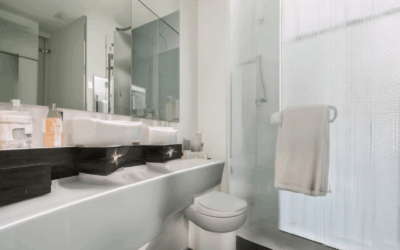
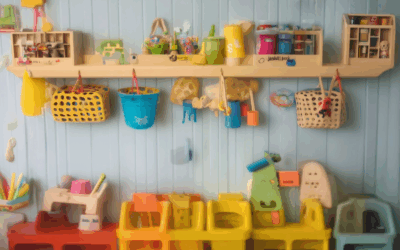
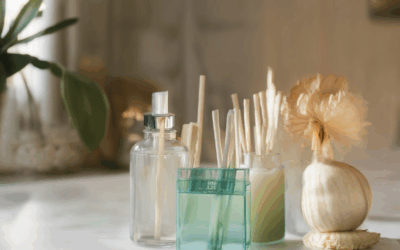
0 Comments